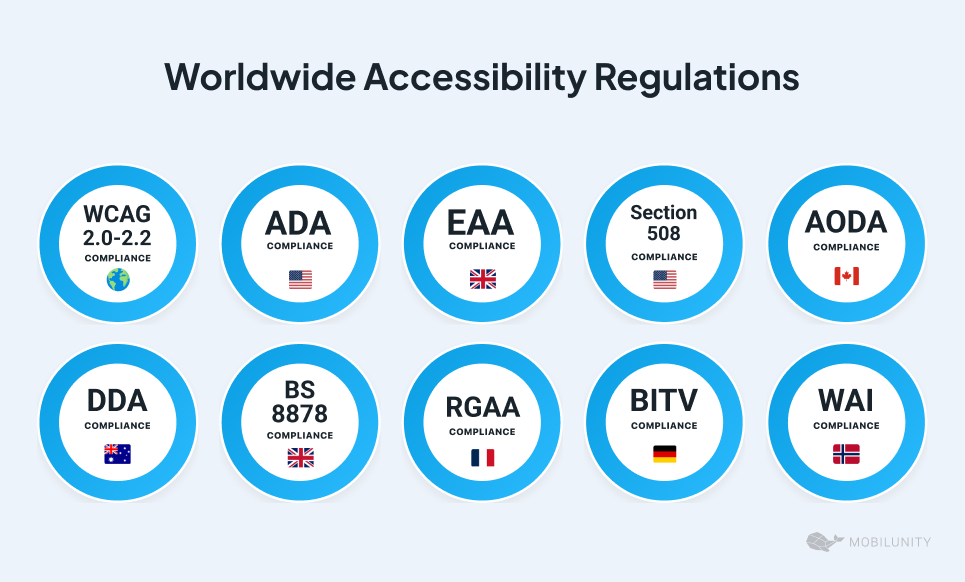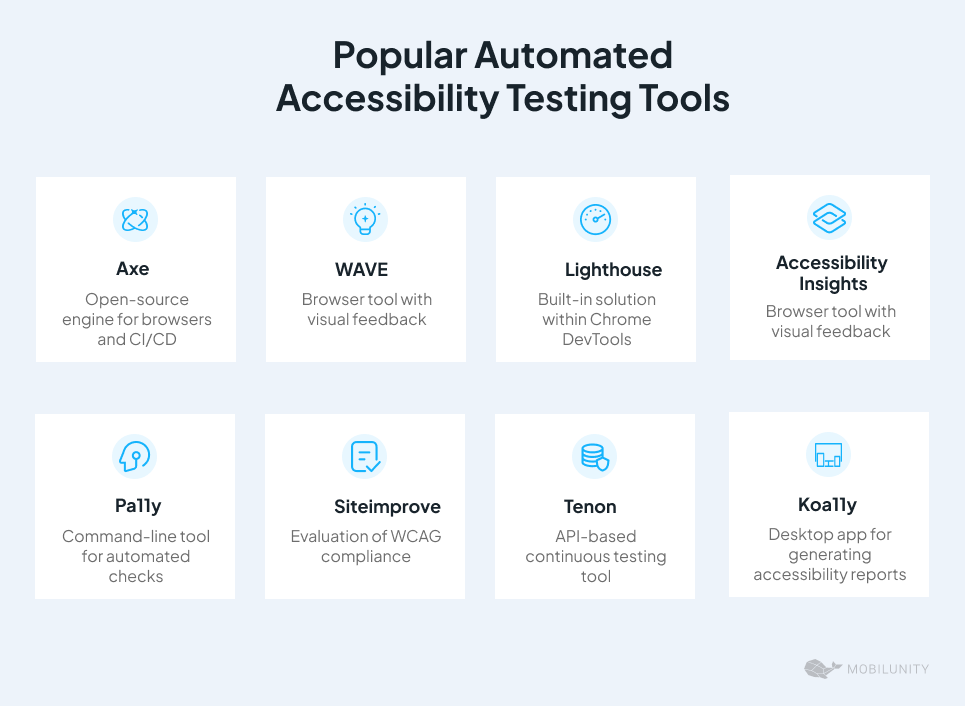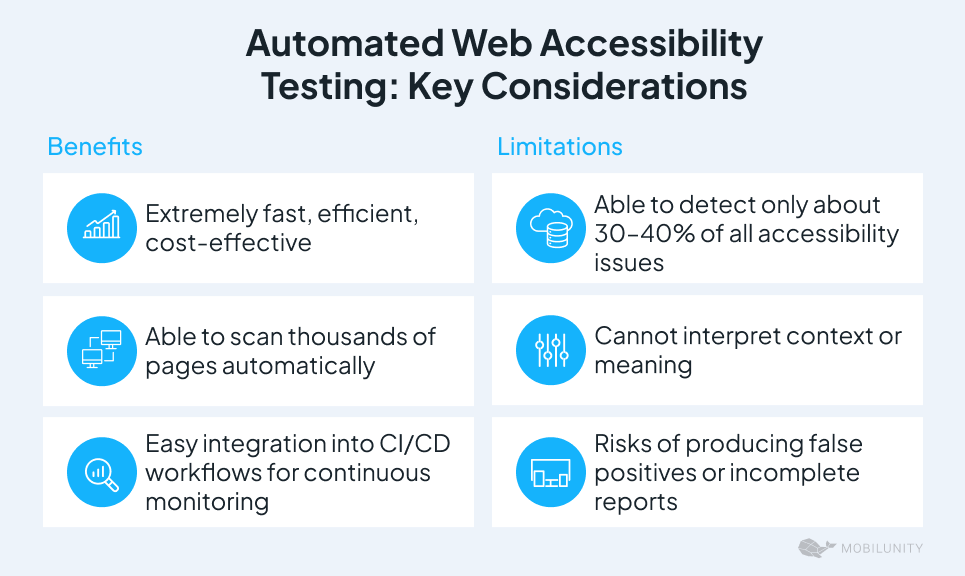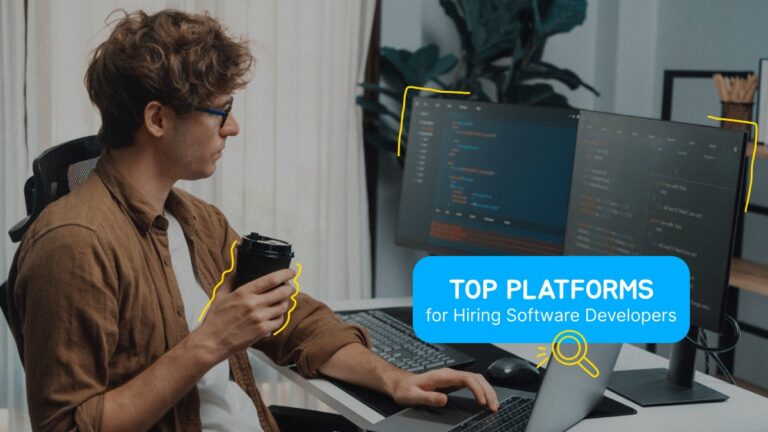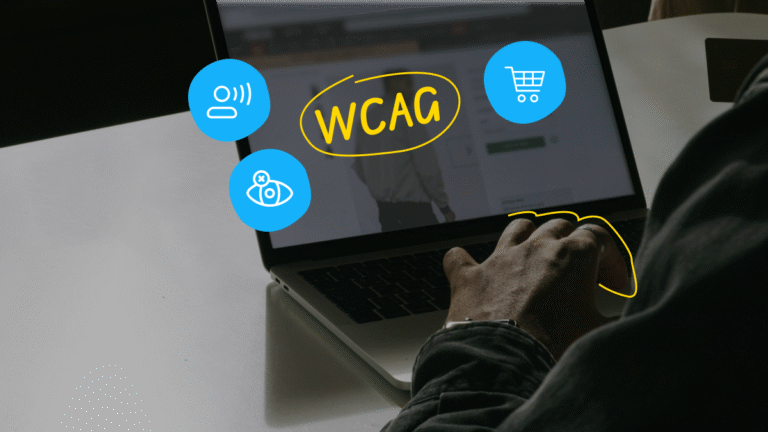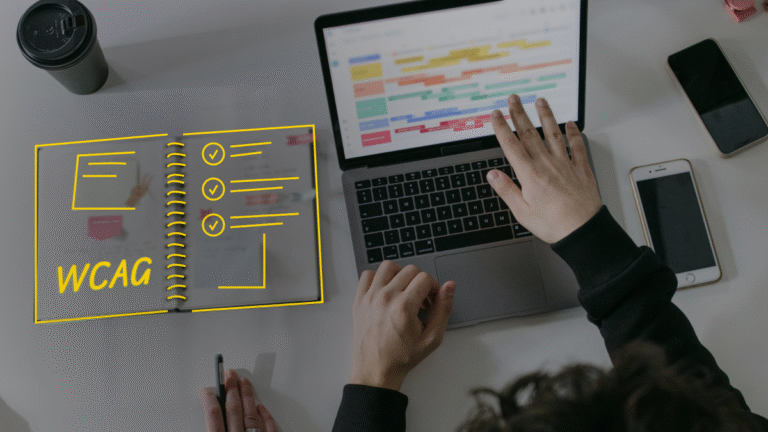Website Accessibility Testing: Why It Matters and How to Do It Right
- What Is Web Accessibility Testing? Breaking Down the Concept
- Why Website Accessibility Audit Is Important
- Main Web Accessibility Audit Types
- Diving Into Essential Accessibility Standards and Guidelines
- Best Practices for Ensuring Efficient Web Accessibility Analysis
- Final Notes on the Role of Website Compliance Audit
- FAQs on Digital Accessibility Audit Essentials
Recently, the focus on accessibility has grown exponentially – and the danger of falling behind becomes more real than ever.
In particular, key accessibility-related trends businesses can’t afford to ignore include the following:
- Accessibility lawsuits continue rising, having spiked by a whopping 37% in 2025;
- The market of global assistive technology is gaining momentum – projected to hit $31 billion by 2028;
- Over 50% of enterprise design teams plan to include dedicated accessibility specialists by 2026.
The key takeaway? Web accessibility testing is no longer a nice-to-have feature or a shiny perk. These times are long gone – and for any business that cares about reputation and growth, it becomes an absolute must.
In this guide, we’ll dive into the essentials of accessibility testing, from its core impact areas to major accessibility regulations to best practices and beyond.
What Is Web Accessibility Testing? Breaking Down the Concept
Shortly put, accessibility testing is all about considering the needs of users with various disabilities: visual, auditory, motor, or cognitive ones. TIn doing so, the core goal here is to identify potential barriers that might prevent this audience from accessing content or performing any actions on a site.
When talking about web accessibility testing, there are several closely connected topics that need to be considered. Let’s explore them.
Simplicity and Readability of Code
The key to accessibility lies clean, readable, and semantically structured code – the one that is easy to interpret by assistive technologies. If developers are able to ensure that every part of a webpage conveys the correct meaning and hierarchy – congrats, half the job is already done.
Extensive Library and Framework Support
Fortunately, since codebase is a crucial accessibility factor, modern web development offers a rich ecosystem of libraries and frameworks that help developers make accessibility implementation faster and more efficient. See the examples of them below.
| Popular Accessibility-Focused Libraries and Frameworks | |
| React Aria React hooks based on WAI-ARIA standards | Angular Material Prebuilt WCAG-compliant UI components |
| Vue A11y Accessibility tools & linters for Vue.js | Bootstrap Responsive accessible UI components |
| Material UI (MUI) React components with ARIA support | Tailwind CSS For utility-first, semantic, accessible design |
| Ember A11y Built-in accessibility helpers & testing | Ant Design React components with accessibility focus |
| Chakra UI React component library with keyboard navigation & ARIA attributes | Foundation Semantic, mobile-first framework emphasizing accessibility |
| Semantic UI Human-friendly HTML structure for accessible components | Radix UI Unstyled accessible primitives for React applications |
Hybrid Approach to Accessibility Testing
Achieving web accessibility comes with a use of several testing method and multiple best practices for each. Accessibility testing specialists need to combine a hybrid approach where different testing methods (automated checks, manual audits, and user testing) come together.
Assistive Technologies and Compatibility
Here’s another aspect to be considered: accessibility-friendly code enables seamless interaction with assistive technologies that people with disabilities rely on daily, which is why investing in professional web and mobile accessibility services is essential. These tech solutions include the following:
- Screen readers. JAWS, NVDA, VoiceOver, TalkBack (Android), ChromeVox (Chrome OS);
- Speech recognition software. Dragon NaturallySpeaking, Windows Speech Recognition, Apple Voice Control, Google Assistant voice input;
- Alternative input devices. Switch access systems, sip-and-puff devices, adaptive keyboards, head pointers, eye-tracking systems;
- Output aids. Refreshable braille displays and braille embossers for tactile reading;
- Screen magnifiers and zoom tools for users with low vision. ZoomText, MAGic, Windows Magnifier, macOS Zoom, etc.;
- Color contrast and readability tools, such as browser extensions and OS-level accessibility settings;
- Text-to-speech (TTS) software. Read&Write, NaturalReader, built-in OS readers.
Accessibility Standards and Guidelines
Another accessibility implementation must-have is utmost alignments with recognized global standards as well as regional laws.
To name a few, the most prominent ones are:
- WCAG (Web Content Accessibility Guidelines). It’s the global benchmark developed by W3C under the goal of making digital content meet the following criteria: perceivable, operable, understandable, robust.
- ADA (Americans with Disabilities Act). This U.S. law requires equal access for individuals with disabilities.
- European Accessibility Act (EAA). This EU directive requires accessibility across key industries: in particular, banking, e-commerce, transport, and others.
Together, they form the foundation for accessible design worldwide – and hence, must be thoroughly considered and adhered to.
Why Website Accessibility Audit Is Important
If you think accessibility is all about beyond merely meeting technical standards, it’s definitely not the case. Fairness, inclusivity, usability for everyone – these are highly important accessibility-driven aspects that lead to a big impact across various business areas. Let’s explore them below.
Legal Compliance
Accessibility testing helps organizations meet international and regional legal requirements, which has impact on the following areas:
- Legal compliance that prevent costly financial penalties;
- Reduced risk of reputation-tearing lawsuits;
- Corporate responsibility makes businesses recognized on the market.
Improved User Experience
Accessible design improves usability for all visitors. Here’s how:
- By simplifying navigation and enhancing readability;
- Adding extra convenience with supports for keyboard-only and assistive technology users;
- Ensuring consistent functionality across devices and browsers.
SEO Benefits
Accessibility and search engine optimization go hand in hand. These two areas are interconnected in the following ways:
- When content is clean and structured (per accessibility guidelines, it’s much easier for search engines to index;
- Adding semantic HTML and alt text has proven to improve search visibility and get more rankings;
- Better usability contribute to longer website duration and conversions, impacting higher rankings.
Brand Reputation & Broader Audience Reach
After all, the convenience and usability designed for all users definitely pays off – expect improved engagement, conversions, and brand reputation, to name a few. Let alone boosted long-term loyalty and even brand advocacy empowering greater audience reach.
Main Web Accessibility Audit Types
To ensure a truly inclusive digital experience, accessibility testing should combine automated, manual, and user-based approaches – each of them focusing on a specific area of accessibility evaluation. Let’s review each of the methods in detail.
Automated Accessibility Testing
Automated accessibility checks are performed with the assistance of special software tools able to scan web pages or applications in a matter of minutes and identify accessibility violations. In doing so, they make their judgment based on a set of predefined rules: for example, missing attributes, poor color contrast, or other structural issues.
Key testing areas for automated checks include:
- Missing alt text for images;
- Incorrect heading hierarchy or skipped heading levels;
- Color contrast ratios below the minimum standard;
- Non-semantic HTML or missing landmarks;
- Unlabeled buttons, links, or form inputs;
- Dynamic content without proper ARIA roles.,
Manual testing
The core goal of this testing method is to evaluate how people with disabilities would navigate and interact with your website or product in real life. This way, a web accessibility expert – not the software tools – check all accessibility requirements and suggest practical improvements to further enhance usability.
Common manual checks Include:
- Assessing the access and usability of all website interactive elements by interactive with them entirely via keyboard without assistant of a mouse;
- Seamlessness in using screen readers or other assistive tech solutions;
- Responsive design tests across various browsers and content preview using different magnification settings (1x, 1.5x, 2x);
- Meticulous verification of all media and audio-related elements (video captions, transcripts, audio descriptions, etc.);
- Checking the ease of error handling, alerts, or any triggered validation messages.
| Manual Web Accessibility Testing: Key Considerations | |
| Benefits | Limitations |
| Effective detection of context-based and usability issues | Time-consuming |
| Tests accessibility in real-world scenarios | Requires expertise |
| Validates and complements automated results | May be subjective |
| Alignment with compliance regulations | Less scalable for large websites |
User testing
With user testing, accessibility checks are performed not just by the QA or design specialists – they are done by people actually experiencing disabilities.
Since they are those who use assistive technologies daily, they deeply understand accessibility complexities. Thanks to this, they are able to provide valuable feedback, identifying critical but potentially overlooked friction points.
Common activities for user testing include:
- Navigating using screen readers, switch controls, or voice recognition software;
- Assessing whether interactive elements are truly perceivable;
- Evaluating content comprehension and navigation flows;
- Providing qualitative feedback on frustrations, ease of use, and satisfaction.
| User Accessibility Testing: Key Considerations | |
| Benefits | Limitations |
| Provides authentic real-world feedback | Requires participant recruitment |
| Able to identify usability and emotional friction points | Time- and resource-intensive |
| Compliance validation from an end-user perspective | Feedback may vary across user groups and technologies |
Diving Into Essential Accessibility Standards and Guidelines
Recognized global standards and legal frameworks are the cornerstone of any accessibility practices – they are what defines how any digital solutions should be designed and maintained for users of all abilities.
Meantime, it’s also important to consider these standards might widely vary across regions – for example, ada website compliance audit for the United States, EN 301 549 for the European Union, JIS X 8341-3 for Japan, and others. Consider these differences to ensure you’re all covered.
| Accessibility Standards and Guidelines Overview | |||
| Standard / Regulation | Region | Scope & Coverage | Enforcement Level |
| WCAG Web Content Accessibility Guidelines | Global | Websites, web apps, all forms of digital content | Advisory (mandatory when adopted by law) |
| WAI Web Accessibility Initiative | Global | Framework providing guidelines, resources, tools for accessibility | Advisory |
| ADA Americans with Disabilities Act | United States | Public- and private-sector digital solutions | Legally enforceable |
| Section 508 Rehabilitation Act | United States (Federal) | Federal websitesFederal software & hardware | Legally mandatory |
| EN 301 549 European Accessibility Act | European Union / EEA | Websites, apps, software, and hardware in public & private sectors | Mandatory for EU member and EEA states |
| EEA European Accessibility Act – Directive | European Economic Area | Digital products and services across EU/EEA markets | Legally binding (enforced in 2025) |
| ISO/IEC 40500:2012 | International | Global ICT & web accessibility | Voluntary but internationally recognized |
| UK Equality Act 2010 | United Kingdom | Businesses, education, public sector websites | Legally enforceable |
| BS 8878:2010 | United Kingdom | Framework for accessibility process management | Advisory |
| AODA Accessibility for Ontarians with Disabilities Act | Canada (Ontario) | Private & public sector organizations | Legally mandatory |
| Australian DDA Disability Discrimination Act | Australia | Public & private digital services | Legally enforceable |
| BITV Barrierefreie Informationstechnik-Verordnung | Germany | Federal & public websites, apps, mobile services | Legally mandatory |
| JIS X 8341-3 | Japan | Government & private sector websites | Mandatory for government, recommended for private |
| WAI-ARIA Accessible Rich Internet Applications | Global | Dynamic content & UI elements enhancement for screen readers | Advisory (technical standard) |
Best Practices for Ensuring Efficient Web Accessibility Analysis
Accessibility requirements can be complex, but some common best practices can help achieve the desired results faster and easier. Ensure you follow the following tips:
> Use semantic HTML
Structure content with proper headings, lists, and landmarks. This way, screen readers will interpret content correctly.
> Provide text alternatives
Ensure all visual elements on the website have descriptive alt text or captions. Plus, don’t forget to include transcripts and audio descriptions for any video content.
> Ensure keyboard-only navigation
Remember: every interactive element (buttons, links, menus, forms, etc.) should be usable without a mouse – only with the keyboard.
> Maintain color contrast for readability
Follow a minimum 4.5:1 ratio for text (which is a recommended WCAG contrast ratio). Besides, for greater readability, ensure clear fonts, adequate spacing, consistent design, and no design elements where the color alone conveys meaning.
> Design responsive, scalable layouts
Check if your site remains usable across all screen sizes and supports zoom up to 200% without any loss of functionality. It’s highly important for users with low vision or mobile-only access.
> Provide clear error messages
All forms, alerts, and pop-ups should include descriptive error handling and guidance with clear instructions what went wrong and how to fix it.
> Regularly audit and test website accessibility
Website accessibility review should be an ongoing activity. Therefore, plan for regular checks, especially those revolving around any code updates and design or content changes.
Final Notes on the Role of Website Compliance Audit
Accessibility standards go way beyond mere checklists or compliance requirements. For businesses, it represents commitment to inclusion and equal opportunity in the digital space – which pays off immensely though greater customer trust, stronger loyalty, and broader audience reach, let alone alleviated legal risks.
It’s undoubted businesses should invest their efforts in finding ways to seamlessly integrate accessibility testing into their day-to-day operations as a part of design, development, and QA workflows. And, when done efficiently, accessibility testing can turn from an overwhelming complexity into a growth leverage and a sign of excellence that pays off.
FAQs on Digital Accessibility Audit Essentials
Disclaimer: All salaries and prices mentioned within the article are approximate numbers based on the research done by our in-house Marketing Research Team. Please use these numbers as a reference for comparison only. Feel free to use the contact form to inquire on the specific cost of the talent according to your vacancy requirements and chosen model of engagement.
